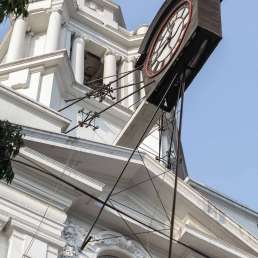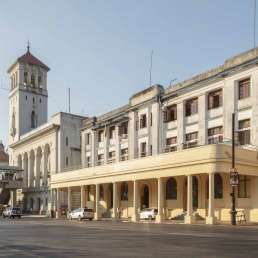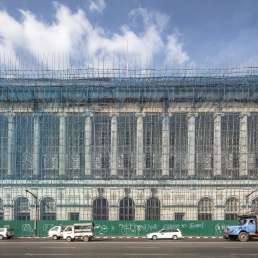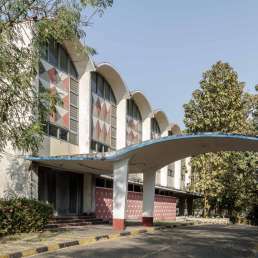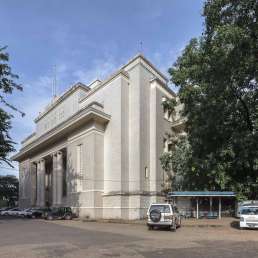Formerly: Accountant-General’s Office and Currency Department
Address: 1 Pansodan Street
Year built: 1900–1907
Architect: AC Martin & Co. (contractors)
This grand, tired and loveable building lies at the southern end of Pansodan Street. It was first the Currency Department and the Accountant-General’s Office. In other words, it was the beating heart of the colonial state. While the former oversaw trade customs, the latter handled taxes on production and sales. Together they ensured that the colonial enterprise remained profitable. All revenue collected in Burma belonged to the Government of India and the Secretary of State. But a degree of devolution granted power to provinces in revenue collection and expenditure. To ensure order in these matters, Calcutta (and from 1911 onwards, New Delhi) appointed an Accountant-General. This was a very prestigious position.
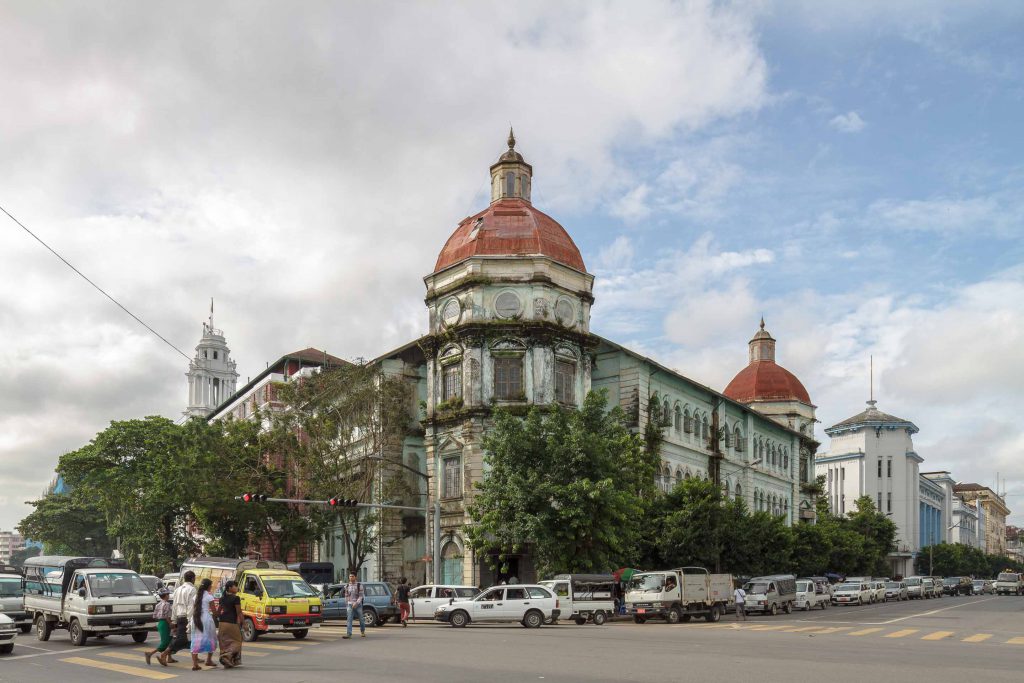
Some revenues were strategic and thus under colonial control. Salt, customs, railways, postage, telegraphs and opium for example. The colonial policy for opium was particularly interesting. The government permitted opium sales in India, citing strong local demand. They raked in considerable revenues. In Burma however, the government forbade the sale of opium to ethnic Burmese. This echoed a crude racist stereotype that was common in travelogues and encyclopaedias. Here, Burmese were often portrayed as “weak, child-like, self-indulgent, and peculiarly vulnerable to ‘over-doing’ opium consumption”, as Ashley Wright notes in his study of opium in colonial Burma. Officials were also alarmed by the increase in opium-related crime among young Burmese men.
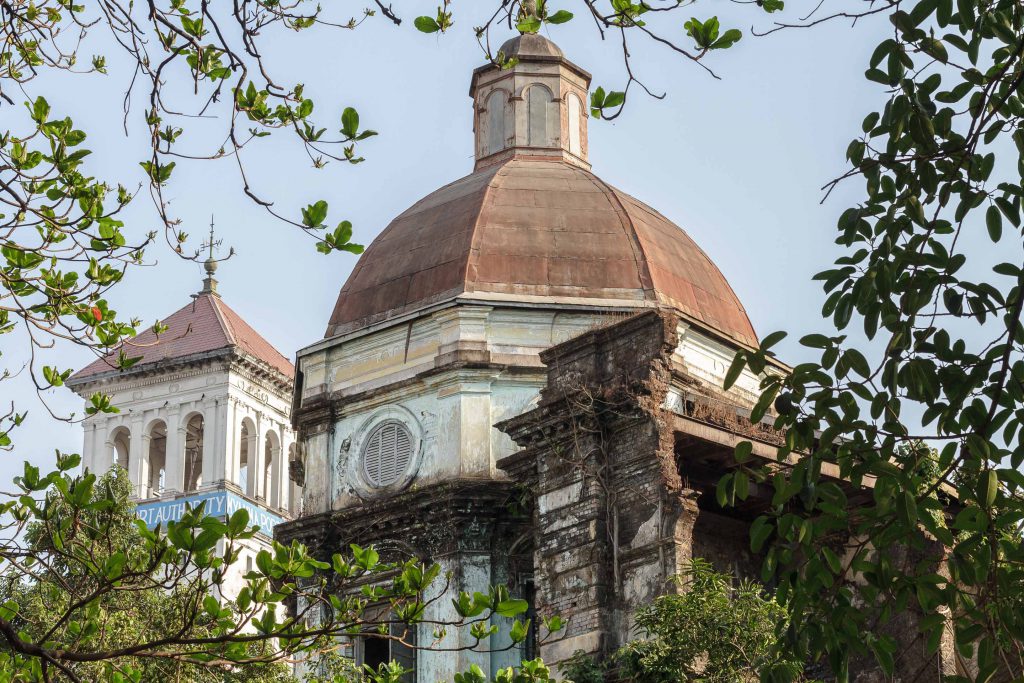
The other function carried out in the building—the Currency Office—provided Burma with both paper and coin currency. As part of British India, Burma used the Indian rupee. Still today, people use the Indian measures lakh (100,000) and crore (10,000,000) in business transactions. While special Burmese rupee notes were printed here, no coins were minted in Burma. They were brought in from India, England and Australia. The Currency Office became obsolete with the establishment of the Rangoon branch of the Reserve Bank of India in 1937.
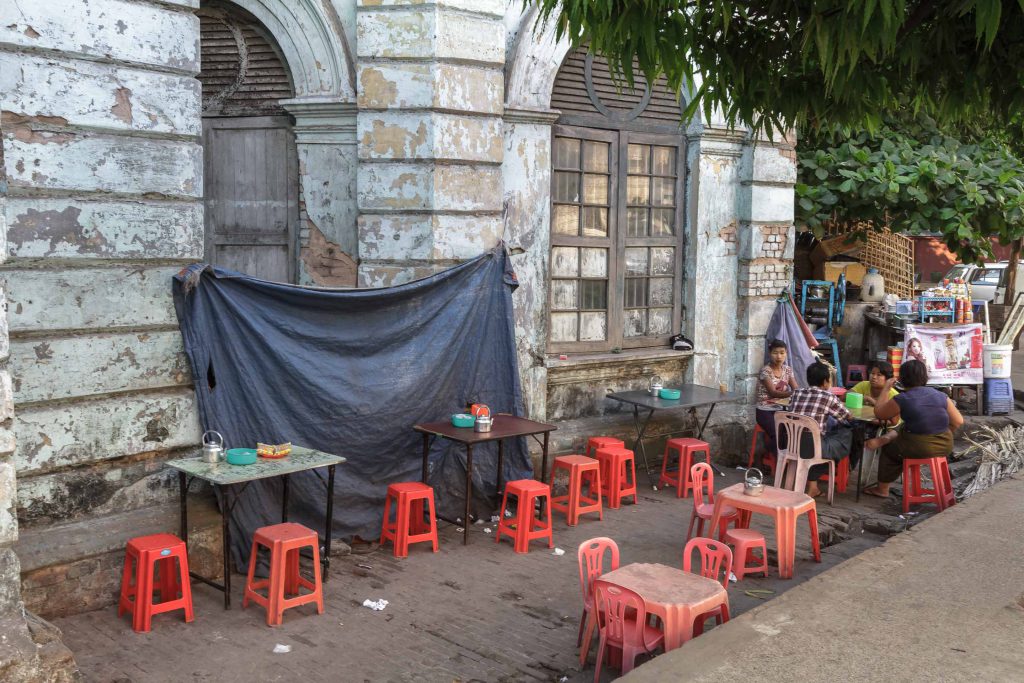
The site has not changed much since the Japanese bombings of 1942. Through the trees on Bank Street, it is possible to catch a glimpse of the remains of the wing once attached to the tower. Today this side of the building hosts one-storey shacks with tea and copy shops, as well as legal offices. The original building resumes further along Bank Street, where a third octagonal tower stands. Its adjoining wing is on the corner of Mahabandoola Garden Street. If they are lucky, visitors can peer into the tower on the corner of Strand Road. Inside is a beautifully ornate spiral staircase. (A stunning example of colonial-era architecture interiors, often hidden from the public and thus overlooked.) Unfortunately the building is in poor condition today. Some of the windows are shuttered with pieces of wood and painted over. Others are just broken. Even the sidewalk is in worse shape here than on the rest of Pansodan Street. The upper levels of the Bank Street tower are almost completely conquered by weeds, but open windows and flying curtains suggest that they are still in use. From a conservation standpoint, however, this building is definitely not beyond repair—just like most other seemingly derelict colonial-era buildings across town. While they suffer from neglect and lack of maintenance, they remain mostly in their original form and are in surprisingly good structural shape.
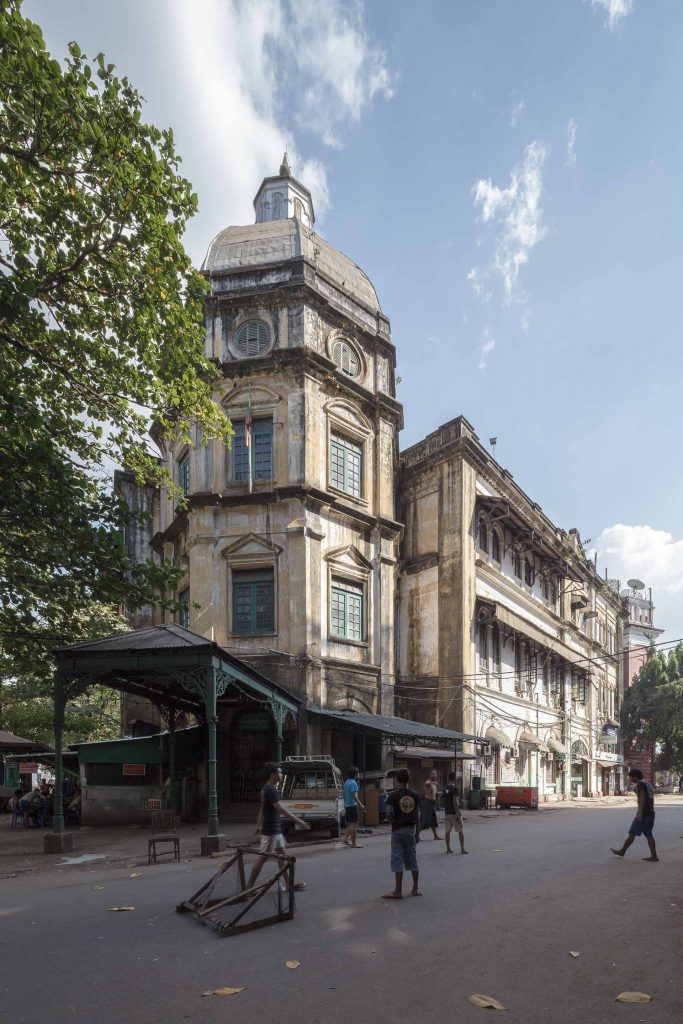
The three original, asymmetric wings of the building were built in stages between 1900 and 1907. The eastern side of the building, on Mahabandoola Garden Street, was first erected in 1900. Further building works took place later in the decade along Pansodan Street. The Currency Department and Accountant-General’s Office were built entirely with bricks, causing structural problems. In 1908, a portion of the façade facing Strand Road collapsed. In 1930, a long wall was badly damaged.
After independence the building housed a small claims civil court and later a juvenile court. Today, the complex houses the Yangon Divisional Court. The section separated by the Japanese bomb damage—and which is in slightly better shape than the court—is an office of the Department of Pensions.
